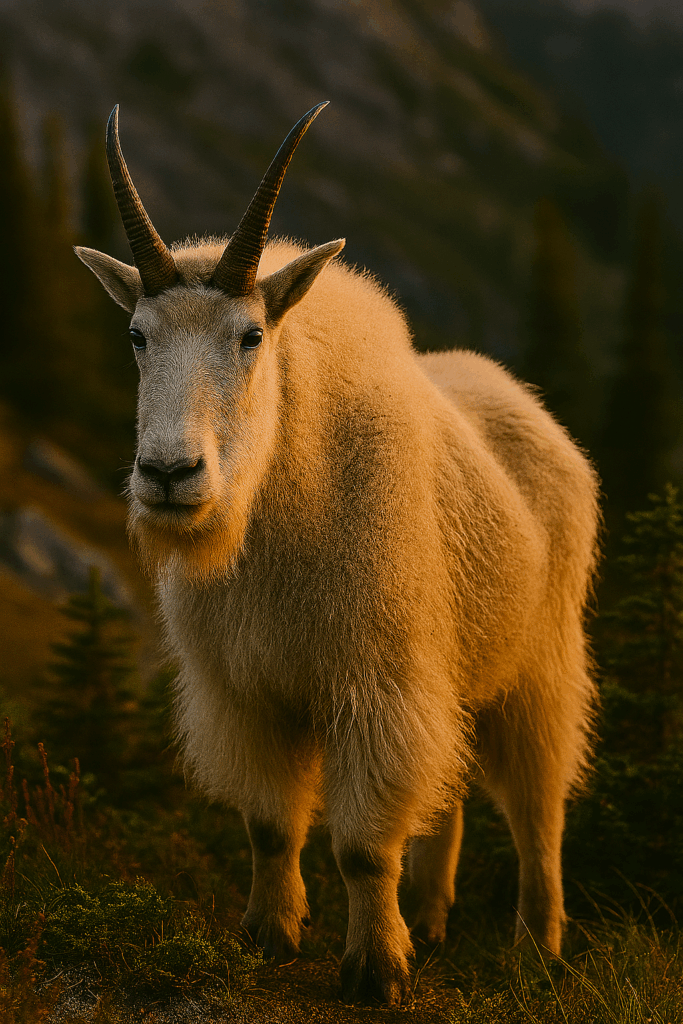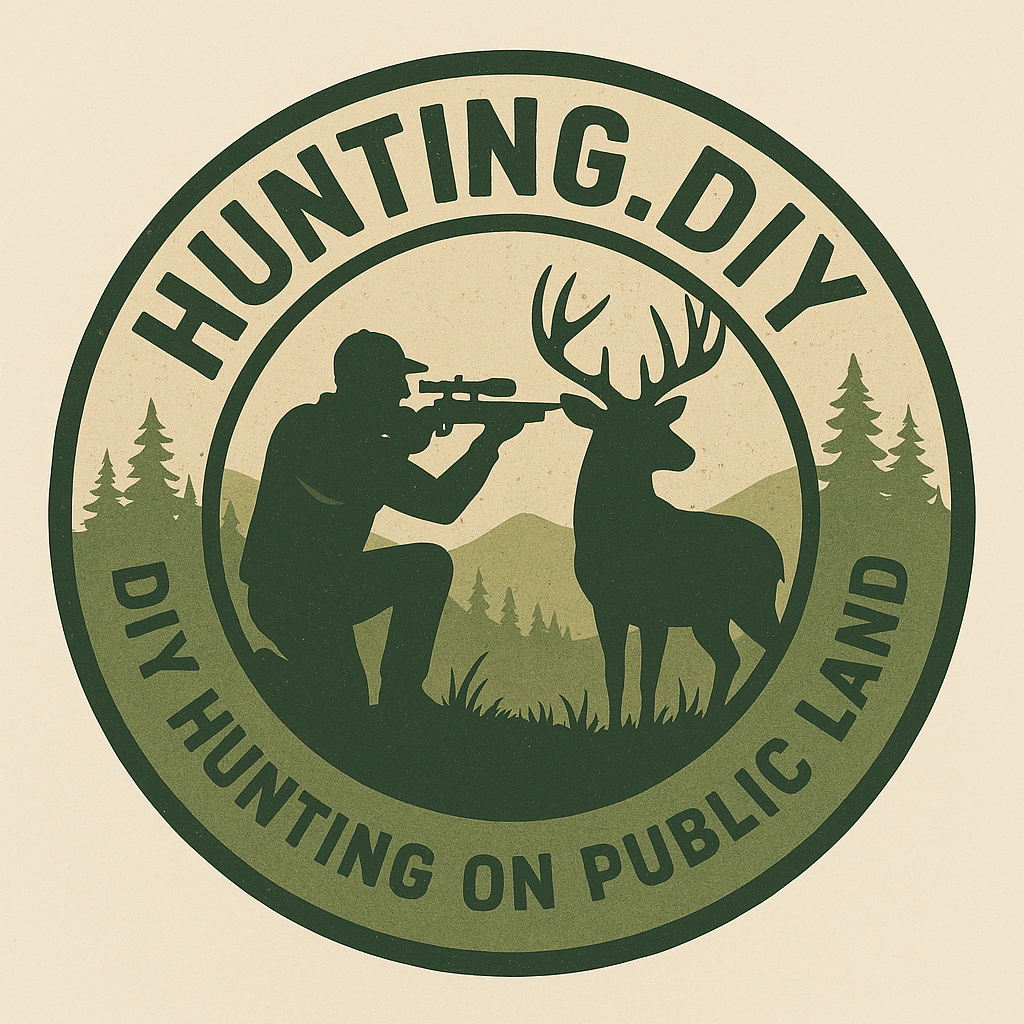Mountain Goat DIY Hunting Guide & Tips (2025)
Mountain goat hunting guide: Conquering steep cliffs and gravity-defying ledges, mountain goat hunting demands grit, sure-footedness, and a ruthless game plan—you’re on public land, solo, no guides allowed. Get ready to outsmart these cliff-dwelling legends with raw skill and unwavering determination.

Species Classification
Mountain goats (Oreamnos americanus) are true goats, not deer, settled into their own genus within the Bovidae family. They diverged from bighorn sheep millions of years ago, specializing in sheer-rock environments. Bulls, does, and wily kids make up small, tight-knit groups that cling to crags far above valleys.
These goats aren’t domesticated like Alpine or Nubian breeds; their wild blood runs thicker, honed by endless vertical ascents. Their coats, horns, and hoof structure evolved specifically for mountain survival, making them one of North America’s toughest big-game trophies.
Physical Description
Picture a snow-white jukebox of muscle and fur: adults weigh 120 to 300 pounds with compact bodies that flex through rocky terrain. Males boast stout, black horns curving backward in a smooth arc, while does have slimmer, sharper spikes. Yearlings blend in with the herd, sporting emerging horns and a lankier frame.
Their double-layered wool keeps them insulated against biting alpine winds. Under heavy guard hairs lies a dense undercoat that traps warmth. Short tails and powerful shoulders aid balance, while splayed, rubbery hooves cling to rock like suction cups—nature’s ultimate crampons.
Distribution and Habitat
Mountain goats rule the high country of the Pacific Northwest, Rocky Mountains, and parts of Alaska. In the Lower 48, key strongholds include Washington’s Cascades, Idaho’s Bitterroots, Montana’s Glacier country, and Colorado’s San Juan Range. They stick above tree line, surviving where few dare to tread.
Look for them on steep, rugged slopes coated in lichens, alpine grasses, and occasional shrubs. They dodge predators and heat by daily ascending to icy heights, only descending for mineral-rich salt licks and water sources hidden among rocky outcrops.
Season Dates and Regulations
Mountain goat seasons crack open in late August through October, varying by state and hunt zone. Tags are limited—often part of a draw, sometimes allocated by preference points. Some areas split hunts into separate seasons for does and trophy rams, each with strict horn-length requirements.
Miss deadlines and you’re staring at another year’s mountain silhouette. Dig into your state wildlife agency’s regs manual: hunt zone maps, bag limits, mandatory check stations, and specific backpack-only or spike-free restrictions apply.
Best Hunting States/Regions
Alaska boasts vast herds and multiple zones, but nonresident tag fees and logistic headaches climb sky-high. British Columbia and Yukon regions offer public-land hunts with fewer crowds, but expect technical climbs.
In the Lower 48, Washington’s Goat Rocks Wilderness and Idaho’s Selkirk Mountains deliver legendary alpine challenges. Colorado opened limited tags in its San Juan and Elk ranges—these next-level hunts demand both card draw luck and climbing chops.
Hunting Equipment: Gun and Ammo
Bring a compact, powerful rifle—.300 Winchester Magnum or .30-06 Springfield with 180–200-grain bullets ensures clean kills at variable mountain ranges. Short barrels (20 inches or less) ease maneuvering through tight chimneys and ledges.
Opt for lightweight packs, climbing harnesses, and a dependable rangefinder. Archers need 80- to 90-pound bows outfitted with mechanical broadheads rated for deep penetration. Every ounce counts when you’re hauling gear uphill for daylight stalks.
Hunting Methods and Techniques
Glassing rules: carry a spotting scope and set up on ridges overlooking goat talus slopes at dawn. Patience wins—goats move slowly but vanish fast. Once you spot a target, plan a stealthy approach that uses rock shadows and outcroppings to break your silhouette.
Calling has limited effect; goats ignore vocal lures. Instead, mimic natural behavior: use head bobs and deliberate movements to blend in. Crawl or glass your way closer on hands and knees, always keeping wind direction in mind. Loose rock and sudden motions are your enemies.
Licenses and Tags
Enter every draw you can. Preference points build over years, tipping odds in your favor. Nonresident applicants face steeper fees but may snag leftover tags in second-chance lotteries. Once drawn, verify tag type (nanny vs. billy), hunt boundaries, and mandatory checking procedures often at remote access points.
Carry proof of successful draw and tag validation on your person—no excuses accepted at check stations scattered along trailheads.
Diet and Feeding
Mountain goats graze on alpine grasses, sedges, mosses, and forbs in summer, switching to lichens and woody browse in colder months. They rely on mineral licks for salt and trace elements vital to antler and horn growth.
Scour cliffside ledges for fresh chew lines on shrubs and patches of greenery tucked into rock hollows. Few animals endure as high or as harsh a diet as these goats.
Reproduction and Life Cycle
Breeding peaks in late October: rams clash horns to win doe groups, locking antlers in brutal displays. Does give birth in late spring on remote ledges—kids must learn vertical survival within hours. Mothers lead them to steep nursery cliffs, safe from predators.
Juveniles stick close for a year, then disperse. Adult survival hinges on frostbite, avalanches, and competition for dwindling alpine forage.
Population Status
Mountain goat numbers are stable to slightly declining in some regions, often due to habitat encroachment, climate shifts, and disease transmission from domestic livestock. Alaska herds remain strong, while Washington reports modest decreases near popular recreation zones.
Check local population surveys—select hunts in units with solid or growing counts to reduce impact on fragile alpine populations.
Meat Quality and Processing
Goat meat tastes gamey and lean, similar to venison but requires slow-cook methods. Field dress immediately; cool carcass by hanging quarters in breezy, shaded locations. Process into roasts and stews—avoid overcooking to prevent dryness.
Haul quarters individually; steep terrain and altitude dictate lighter loads. Freeze promptly in vacuum-sealed bags once you’re off the mountain.
Safety Considerations
Cliffside hunting is pure vertical risk. Always use a climbing harness, ropes, and helmets when contracting to sheer faces. Test every handhold and foothold; loose rock can send you tumbling.
Watch for thin air—altitude impairs judgment and stamina. Carry extra water, electrolytes, and a GPS or satellite communicator. In emergencies, help may take hours to arrive.
Tracks and Sign
Mountain goat tracks are small (2 to 3 inches long) and teardrop-shaped, often offset by a deep, wedge-like indentation. Their trails weave narrow paths etched into rock, visible as faint grooves on ledges.
Look for horn rubs on lichen-covered boulders and piles of droppings—small, pellet-like scat clustered near resting spots. Nurseries leave faint kid tracks in softer ground near cliffs.
Similar Species
Don’t confuse them with bighorn sheep—those have curled horns and brown coats. Dall sheep sport slender horns and a more uniform snow-white color, but their horns spiral differently. Mountain goat horns sit close together on the forehead and curve backward without loop.
If you’re staring at a shaggy, grizzled hide on a precipitous cliff and horns that run straight back, you’ve found your quarry—no mix-ups allowed.
